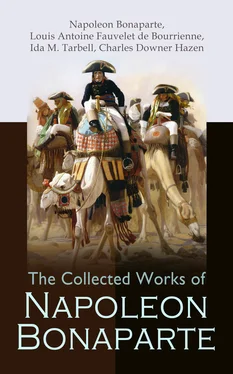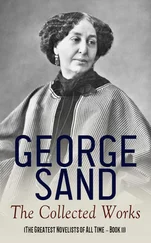When Marshal Saxe was besieging Brussels, with only twenty-eight thousand men, opposed to a garrison of twelve thousand, he received intelligence that the Prince of Waldeck was assembling his forces to raise the siege. Not being strong enough to form an army of observation, the marshal reconnoitred a field of battle on the little river Voluve, and made all the necessary dispositions for moving rapidly to the spot, in case of the approach of the enemy. By this means he was prepared to receive his adversary without discontinuing the operations of the siege.
Table of Contents
Feuquière says that “we should never wait for the enemy in the lines of circumvallation, but we should go out and attack him.” He is in error. There is no authority in war without exception; and it would be dangerous to proscribe the principle of awaiting the enemy within the lines of circumvallation.
During the siege of Mons, in 1691, the Prince of Orange assembled his army, and advanced as far as Notre Dame de Halle, making a demonstration to succor the place. Louis XIV, who commanded the siege in person, called a council of war to deliberate on what was to be done in case the Prince of Orange approached. The opinion of Marshal Luxembourg was to remain within the lines of circumvallation, and that opinion prevailed.
The marshal laid it down as a principle that, when the besieging army is not strong enough to defend the whole extent of circumvallation, it should quit the lines and advance to meet the enemy; but when it is strong enough to encamp in two lines around a place, that it is better to profit by a good entrenchment—more especially as by this means the siege is not interrupted.
In 1658, Marshal Turenne was besieging Dunkirk. He had already opened the trenches, when the Spanish army, under the orders of the Prince Don Juan, Condé, and D’Hocquincourt, appeared in sight, and took post upon the Downs, at a distance of a league from his lines. Turenne had the superiority in numbers, and he determined to quit his entrenchments. He had other advantages also. The enemy was without artillery, and their superiority in cavalry was rendered useless by the unfavorable nature of the ground. It was, therefore, of great importance to beat the Spanish army before it had time to entrench itself and bring up its artillery. The victory gained by the French on this occasion justified all the combinations of Marshal Turenne.
When Marshal Berwick was laying siege to Philipsburg, in 1733, he had reason to apprehend that the Prince of Savoy would attack him with all the forces of the empire before its termination. The marshal, therefore, after having made his disposition of the troops intended for the siege, formed, with the rest of his army, a corps of observation to make head against Prince Eugene, in case the latter should choose to attack him in his lines, or attempt a diversion on the Moselle or Upper Rhine. Prince Eugene, having arrived in front of the besieging army, some general officers were of opinion that it was better not to await the enemy in the lines, but to move forward and attack him. But Marshal Berwick, who agreed with the Duke of Luxembourg, that an army which can occupy, completely, good entrenchments is not liable to be forced, persisted in remaining within his works. The result proved that this was also the opinion of Prince Eugene, for he did not dare to attack the entrenchments, which he would not have failed to do if he had any hopes of success.
Table of Contents
Those who proscribe lines of circumvallation, and all the assistance which the science of the engineer can afford, deprive themselves gratuitously of an auxiliary which is never injurious, almost always useful, and often indispensable. It must be admitted, at the same time, that the principles of field-fortification require improvement. This important branch of the art of war has made no progress since the time of the ancients. It is even inferior at this day to what it was two thousand years ago. Engineer officers should be encouraged in bringing this branch of their art to perfection, and in placing it upon a level with the rest.
“If we are inferior in numbers,” says Marshal Saxe, “entrenchments are of no use, for the enemy will bring all his forces to bear upon particular points. If we are of equal strength they are unnecessary also. If we are superior, we do not want them. Then why give ourselves the trouble to entrench?” Notwithstanding this opinion of the inutility of entrenchments, Marshal Saxe often had recourse to them.
In 1797, Generals Provéra and Hohenzollern having presented themselves before Mantua (where Marshal Wurmser was shut up), for the purpose of raising the siege, they were stopped by the lines of contravallation of St. George. This slight obstacle sufficed to afford Napoleon time to arrive from Rivoli and defeat their enterprise. It was in consequence of neglecting to entrench themselves that the French had been obliged to raise the siege in the preceding campaign.
Table of Contents
If circumstances prevent a sufficient garrison being left to defend a fortified town, which contains an hospital and magazines, at least every means should be employed to secure the citadel against a coup de main .
A few battalions dispersed about a town, inspire no terror; but shut up in the more narrow outline of a citadel, they assume an imposing attitude. For this reason it appears to me that such a precaution is always necessary, not only in fortresses, but wherever there are hospitals or depôts of any kind. Where there is no citadel, some quarter of the town should be fixed upon most favorable for defence, and entrenched in such a manner as to oppose the greatest resistance possible.
Table of Contents
A fortified place can only protect the garrison and detain the enemy for a certain time. When this time has elapsed, and the defences of the place are destroyed, the garrison should lay down its arms. All civilized nations are agreed on this point, and there never has been an argument except with reference to the greater or less degree of defence which a governor is bound to make before he capitulates. At the same time, there are generals—Villars among the number—who are of opinion that a governor should never surrender, but that in the last extremity he should blow up the fortifications, and take advantage of the night to cut his way through the besieging army. Where he is unable to blow up the fortifications, he may always retire, they say, with his garrison, and save the men.
Officers who have adopted this line of conduct, have often brought off three-fourths of their garrison.
In 1705, the French, who were besieged in Haguenau by Count Thungen, found themselves incapable of sustaining an assault. Péri, the governor, who had already distinguished himself by a vigorous defence, despairing of being allowed to capitulate on any terms short of becoming prisoner of war, resolved to abandon the place and cut his way through the besiegers.
In order to conceal his intention more effectually, and while he deceived the enemy, to sound at the same time the disposition of his officers, he assembled a council of war and declared his resolution to die in the breach. Then, under pretext of the extremity to which he was reduced, he commanded the whole garrison under arms; and leaving only a few sharpshooters in the breach, gave the order to march, and set out in silence, under cover of the night, from Haguenau. This audacious enterprise was crowned with success, and Péri reached Saverne without having suffered the smallest loss.
Читать дальше












